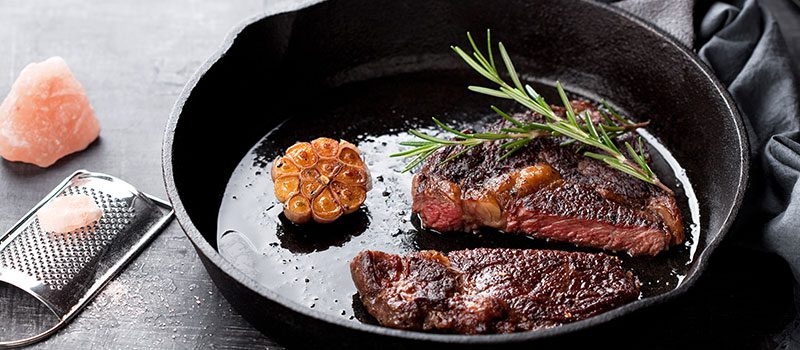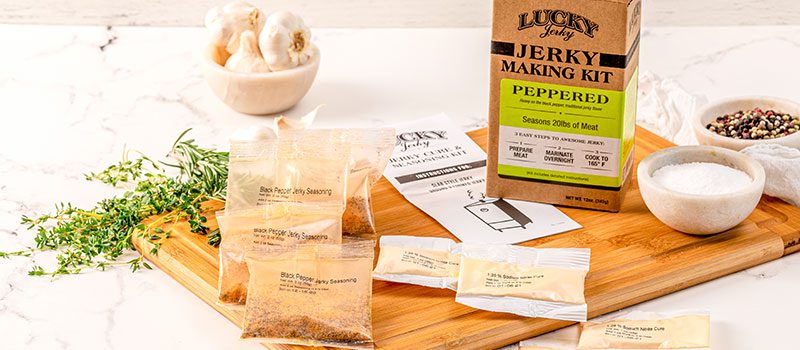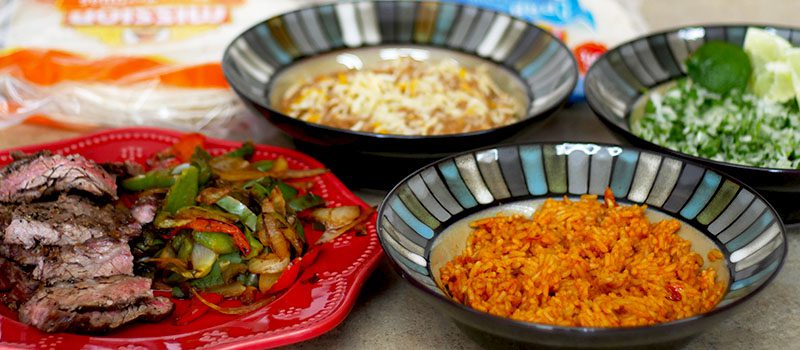Corned beef is a traditional St Patrick’s Day favorite. This year, we “corned” 3 different cuts of beef and cooked them with 3 different methods! We are excited to share the results with you!!
Okay, so let’s clear up the whole “Corned Beef” nomenclature thing right off the bat… there is NO “corn” when we’re talking about “Corned Beef” “Corned” refers to kernels of salt that are used to help preserve and season the beef. The other elephant in the living room is the color of corned beef. It’s red/pink when it’s cooked – just like a ham. That comes from an ingredient that is commonly used in brines called “sodium nitrite” it’s the same thing that gives ham it’s red/pink color and it’s there because “food safety.” Sodium Nitrite prevents the growth of bacteria that cause food-borne illness like botulism, it gets a bad rap in some circles, but it has saved countless lives from food poisoning, so we see it as a “net-positive”.
Corned Beef is a two part process – “Brining” (or corning) and “Cooking.” In our recipe we use a brine, which is a simple combination of salt, sugar, pickling spice and sodium nitrite. The cuts of beef soak in the brine for 10 days which allows the sodium nitrite to fully penetrate the cuts and “cure” the meat. This is what gives the corned beef its distinctive color and the blend of salt, sugar and pickling spices give the beef a very nice, mild flavor.

To make our brine, we brought approx 2-2.5 quarts or 4 lbs of water to a boil, then added 2 cups of salt, 1 cup of sugar, a 1.5 oz bottle of Pickling Spice (McCormick brand), and 2 oz of 1.25% sodium nitrite cure and stirred while boiling until salt, sugar and sodium nitrate are fully dissolved and the brine has taken on a nice “tea-like” color from the pickling spice. We remove from heat and added and additional 4 lbs of ice to cool the brine to slightly below room temperature.
Next, the cuts need to be submerged in the brine. This can be accomplished in different ways. It is important to use a non-metallic container (stoneware or plastic) as the salt in the brine can react with the metal to give the corned beef a metallic flavor.
We recommend brining for minimum of 7 to 10 days so the sodium nitrate can fully penetrate the cut, brining for a shorter period of time can cause brown (uncured) spots in the center of the cut, while mainly cosmetic, this can be detrimental to presentation, especially if you’re planning to post corned beef pics to “the gram” to impress your “followers” on St Paddy’s Day…and who has time for a social misstep like that…
After the corned beef has brined for an adequate period of time, it is time to cook. The traditional way to cook a corned beef is a few hours in a pot of water that is set to a low boil. The corned beef hangs out in this hot bath until the internal temp of the corned beef reaches 195-200° F, at which time it is pulled and rested. This was the method that we used to cook our 4lb Eye of Round Roast, and it came out great!! Many times onions, carrots, cabbage and potatoes are added to the boil and served as sides. We skipped the veggies to keep the focus on the beef this time around and went with some “Frank’s Sauerkraut” as the lone side… there were no regrets in this office, but adding the vegetables will add some flavor to the final product and will extend the meal further, if you are serving folks who will eat veggies – something we seem to lack at NSB.
We added a couple additional cooking methods that we were curious to try. The most pleasant surprise from our efforts came from the “Instant Pot.” We cooked the Tri-Tip in the Instant Pot with just enough water to cover the beef, plugged it in and pushed the “Meat/Stew” button and in 30 short minutes it was auto venting. We let it hang out on “Keep Warm” for another hour and a half or so, which was probably not necessary, and the results were outstanding. We highly recommend this method, and the Tri-Tip worked exceptionally well as a corned beef cut.
The final method, and definitely most intense in the flavor department was the Brisket Flat on the grill. We seared it and started the cook on our gas grill. It is an infrared grill, so there was little risk of burning the brisket flat and it allows us to apply high heat rapidly. We used the infrared to bring the internal temperature of approximately 160° F, then moved the brisket flat over to the Traeger and finished it to an internal temp. of 195° F on a 250° F smoke. The results were very good. The flavor was much more concentrated than the two corned beefs that were cooked in water, the dry cook increased the flavor from the pickling spice and salt and the smoke from the Traeger was a great addition. As expected, the texture was perfect for a brisket; much like an uncured brisket prepared in the same fashion, it was tender and juicy, but it didn’t fall apart until the bite.

Watch our in-depth video below for expert tips and tricks, full walkthrough and instructions for making corned beef.





Leave a comment (all fields required)